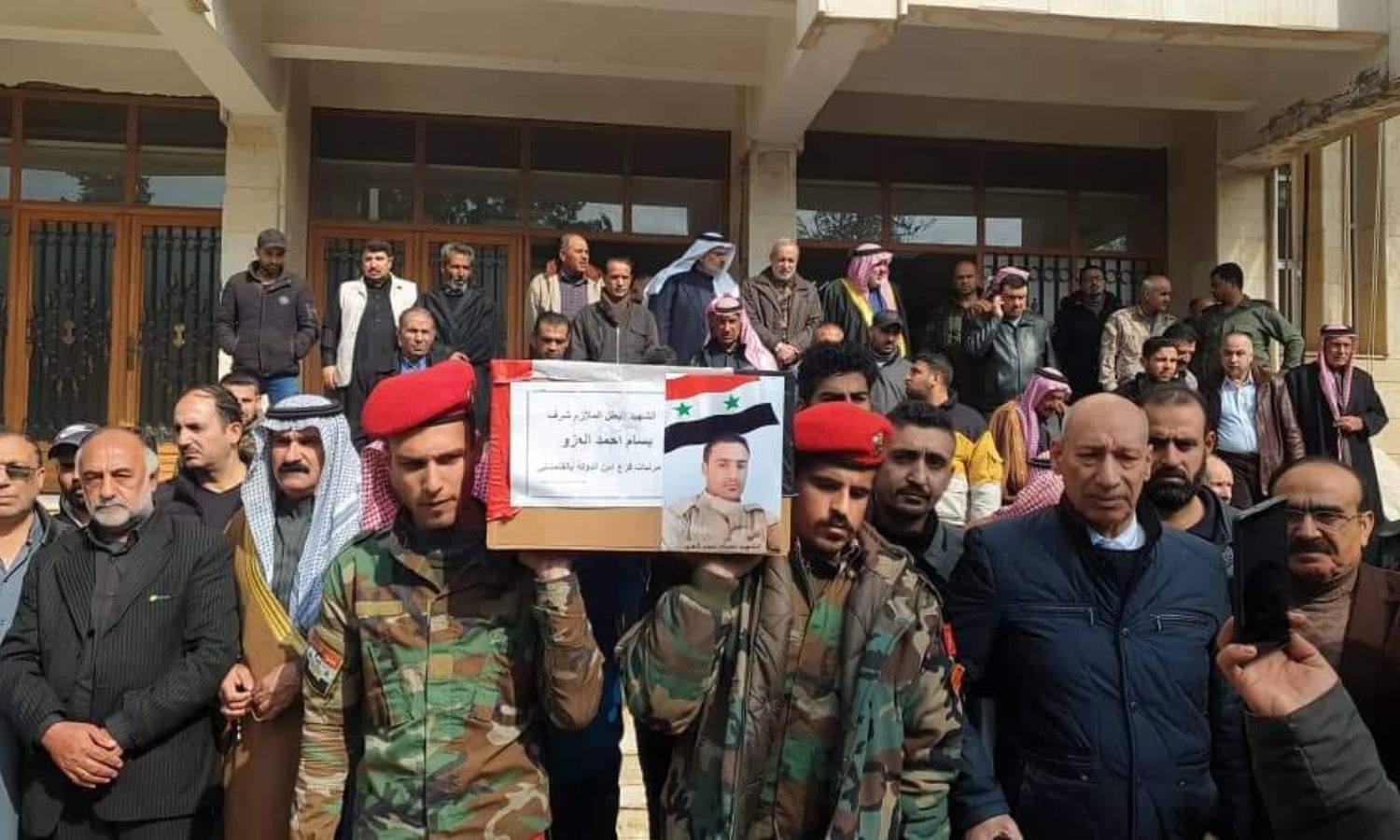For the first time since 2019, ISIS has resumed operations in the central area of Qamishli, marking a significant shift in the conflict landscape where Syrian regime forces are deployed. The group claimed responsibility for an attack on February 17, 2024, which resulted in the death of a regime member and left another injured. This operation involved gunfire targeting a military position held by regime forces within Qamishli’s security sector.
This recent operation underscores a notable resurgence of ISIS activities in Syria, targeting areas previously considered secure. The attack is distinguished as the organization’s first targeted action in Qamishli’s center since a car bombing incident in 2019 that inflicted casualties among civilians.
Following the attack, the Press Office in Al-Hassakeh Governorate shared a photograph on Facebook, documenting the funeral of Lieutenant Sharaf Bassam Al-Azou, who was killed during the ISIS assault in Qamishli. The office highlighted that Lieutenant Al-Azou was fulfilling his national duty at the time of his death, without specifying the attackers.
The resurgence of ISIS extends beyond Qamishli; recent operations have targeted various regions in Syria, including an employee of the Autonomous Administration in Hassakeh’s Mufti neighbourhood. Additionally, ISIS activities have expanded to Sukhna, east of Homs, a region previously known for the organization’s presence.
The Syrian regime maintains control over small sectors in the central parts of Al-Hasakah and Qamishli, referred to as “security squares” due to their concentration of security and government facilities. Meanwhile, the Syrian Democratic Forces (SDF) control extensive areas surrounding these sectors.
ISIS has escalated its operations across Syria, achieving a frequency not seen in over a year. The organization has broadcasted its activities through its official Telegram channel, claiming responsibility for numerous attacks across northern Syria and the Badia region in Homs’ countryside. The first week of this year alone saw 32 operations, followed by 34 the next week, with an additional 11 operations reported on February 15.
This pattern of attacks signifies an intensification of ISIS’s operational scope, reaching areas in governorates like Raqqa and Al-Hasakah that had not experienced such incidents for approximately a year.
This article was translated and edited by The Syrian Observer. The Syrian Observer has not verified the content of this story. Responsibility for the information and views set out in this article lies entirely with the author.


